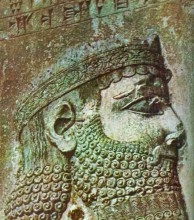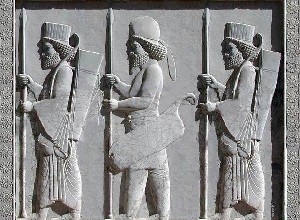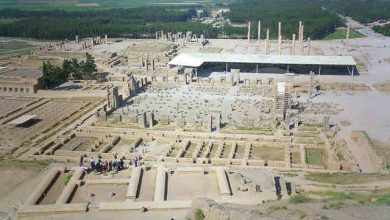Antiquities and historical valuesAncient PersiaAchaemenid ruleThe Great Cyrus (Cyrus)
The building of Persepolis

Parse is the ancient name of a building that we know from the facade of Jamshid's throne. Parse is recorded in one of the stone inscriptions of Xerxes. The Greeks called this place Persepolis. 43 kilometers south of Pasargad, the capital of Cyrus the Great, Was made. This building as one of 10 The world's top historical building is registered in UNESCO.
…
There are evidences that show that this place was a government center during the time of Cyrus and Cambogia, but there are no buildings from that period, and the buildings of Persepolis were all built from the time of Darius. In all palaces, there is a stone inscription that The builder of the building has been introduced. Apart from these original inscriptions, many clay tablets have been discovered in Persepolis, all of which were turned into pottery in the burning of the Macedonian king and have reached us intact after centuries. These tablets provide interesting information about the affairs of the city. The government and the life of the people of that time have been passed on to us.
At the beginning of the construction operation, a row with dimensions of 450 x 300 meters was leveled by Dariush's men. As he himself described, the high places were cut and the hollow places were filled with gravel to make them all uniform and flat. The first building that was built was the royal treasury in It was southeast of Safa. In this building, the booty that was taken from the lands under the rule of the Achaemenids, as well as the gifts that the loyal kings of those lands gave especially during Nowruz ceremonies, were kept. It was added. At least according to the clay tablets left from that time 1348 People per year 467 BC they worked in the treasury.
Apadana Palace was also built at the same time. This palace can be considered the heart of Persepolis. Its famous eastern staircase is one of the masterpieces of the world, where the line of gift-bearers is displayed in intimacy.. Thousands of people could sit in the central part of the palace at the same time. 72 The roof column of the building 25 They kept a meter from the floor of the building
According to the stone inscription of the builder
Darius the Great, the great king of the kings, the king of the countries, the son of Hishtasep, an Achaemenid, built this building. At this stage of the construction of the Jamshid Throne, passageways were also built into the stones for the passage of water and sewage, the effects of which are clearly visible even now..
The second stage of construction of Takht Jamshid buildings from the year 490-480 p.m. It started during the time of Darius I and ended during the time of Xerxes, the son and successor of Darius.
Xerxes says:
When Darius left this world, with the approval of Ahura Mazda, I succeeded him. After I became king, I finished the half-finished works of my father and added to them myself.
In the third stage of the construction of the Jamshid throne, the Thatcher Palace was also built, this palace was the residence of Darius I . The Gate of Nations and its entrance staircase were also built. The unique feature of this two-way staircase is that it cannot be climbed except with dignity and slowly. In the next decade, that is 480-470 p.m. The Hadish Palace was built, which is twice the size of the Thatcher Palace. Next to it, a palace known as Haremsara was built, where the Shah's wives lived in private rooms. In the fourth stage, the Hundred Pillar Palace was built. At the same time, the treasury was also a little bigger. The construction of the 70x70 meter palace with one hundred columns was completed during the reign of Ardashir I, the son of Xerxes. 450 For a century, nothing special happened in the construction of Persepolis .
Ardashir III in 358-338 a palace 32 He built a pillar and some road inside Persepolis. Finally, when Darius III built a large gate in the north of the Hundred Pillar Palace, the entire Takht Jamshid in the first weeks of the year 330 BC, it was attacked by the Macedonian king and was set on fire by order of Alexander.
One of the points to consider in the designs of Persepolis is the sense of friendship, peace and harmony of different people, even in one design, Armenians arrive in the presence of the king with their weapons.. All the people are standing with their hands together and speaking together, and there is no sign of violence or bloodshed. While comparing these motifs with other ancient motifs, they are full of violence..
Close 200 Achaemenid kings lived in these palaces for more than 20 They ruled the satrapy. The Achaemenid dynasty was established by Cyrus the Great and Darius gave life to it, so that the principles that Darius invented remained until the end of the Achaemenid dynasty.. Until it is attacked and destroyed by the Macedonian king.
Retrieved from Iran Atlas





